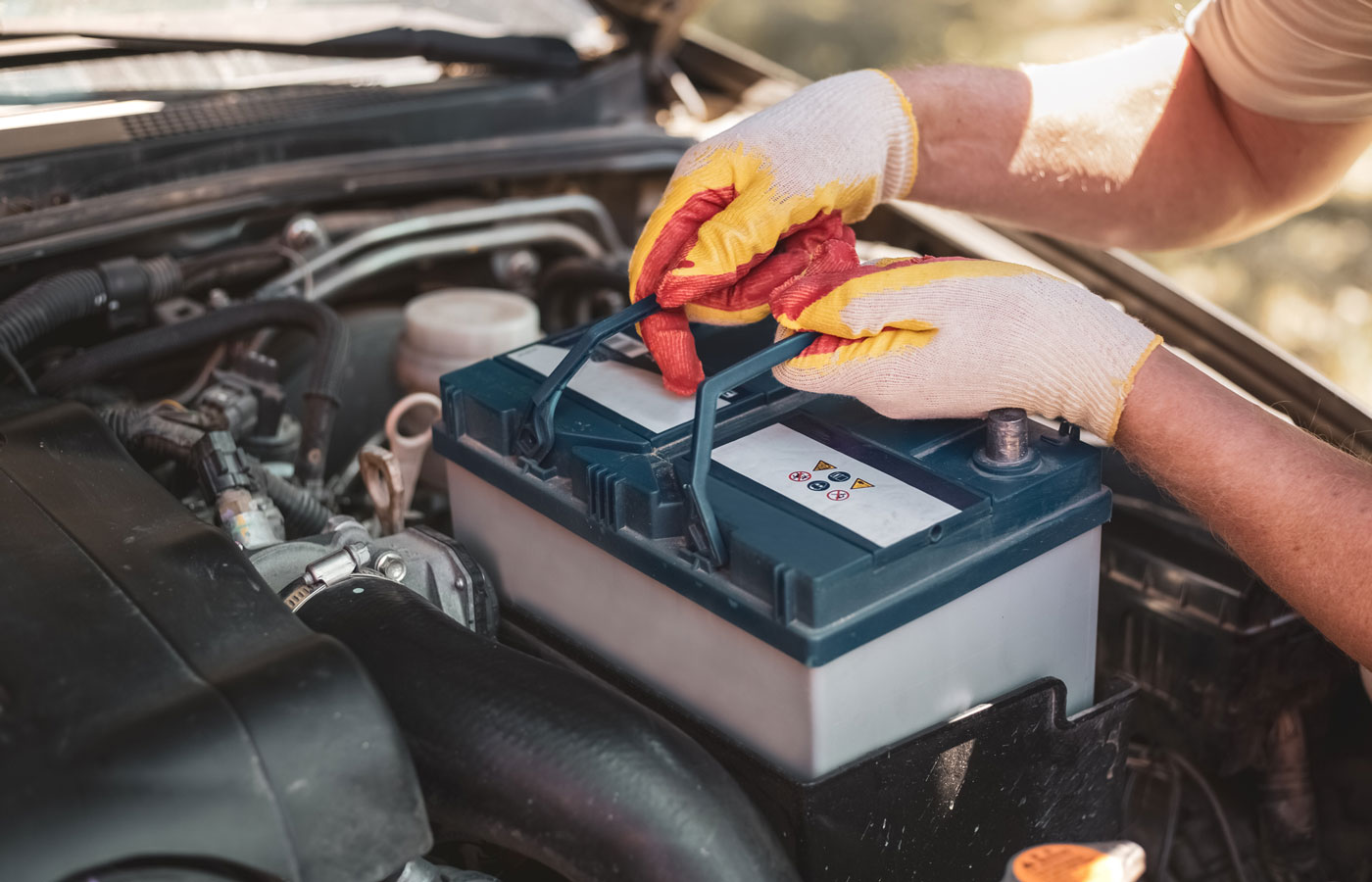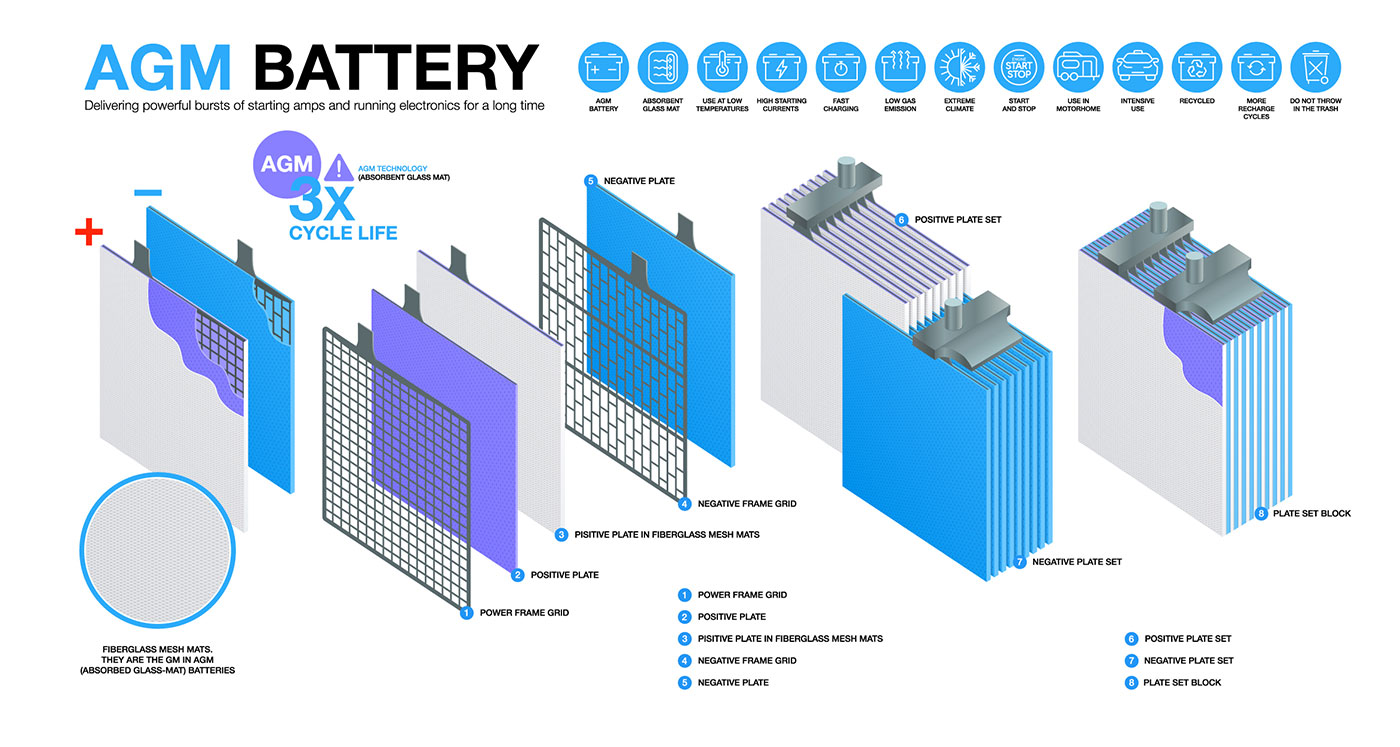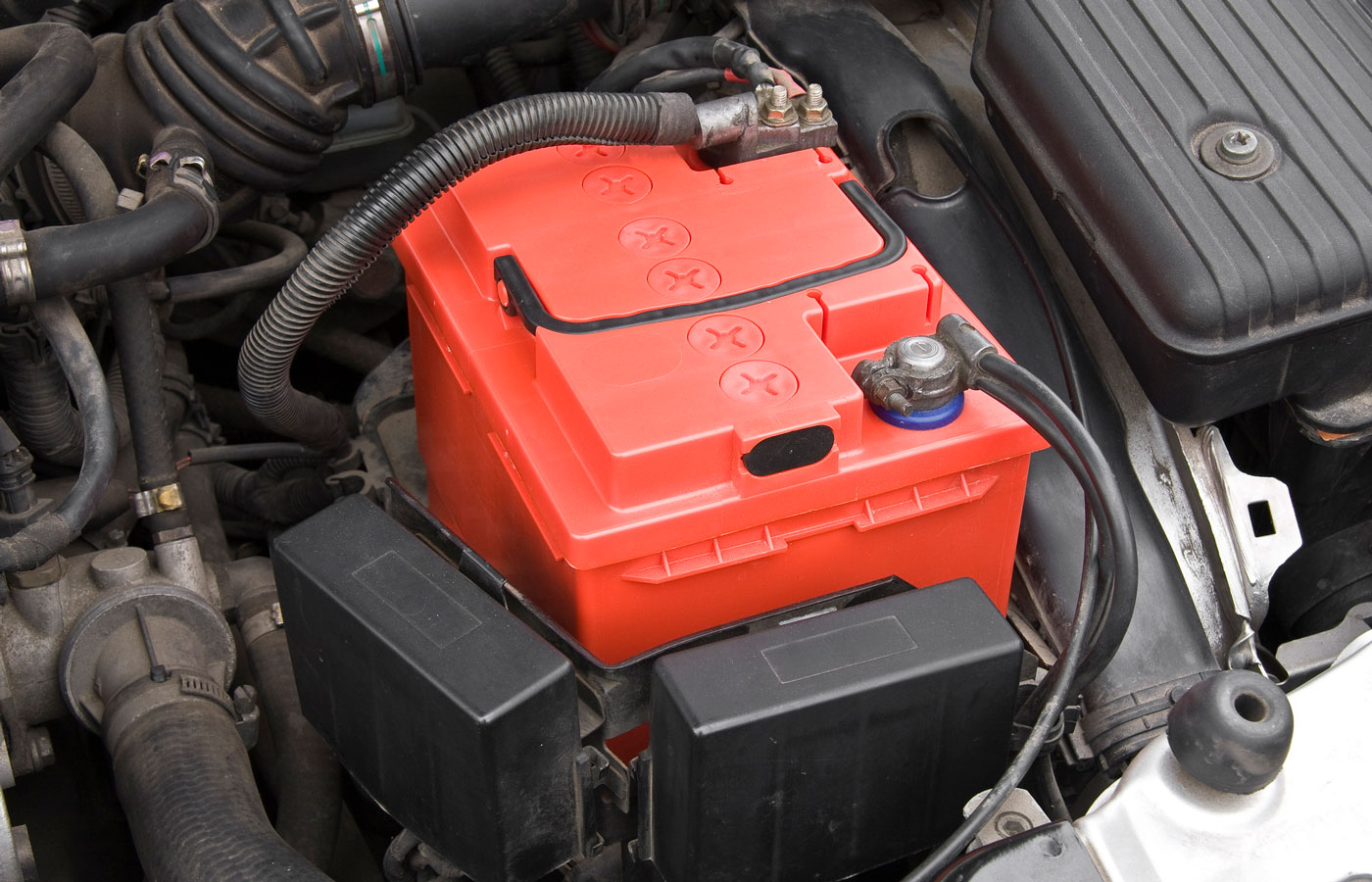What to Know About AGM Battery Vs. Lead Acid Battery
Learn about the similarities and differences between these two types of car batteries.
 Getty
Getty
Two options stand out in the world of automotive batteries: absorbed gas mat batteries and lead acid batteries. While both serve the same purpose of storing and delivering electrical energy and share the same chemistry, their construction, performance and applications differ. Understanding the distinctions between these types can help consumers make informed decisions.
What Is a Regular Lead Car Battery?
Also called flooded batteries, regular lead acid car batteries are the most common in cars, trucks and vans. Divided into six separate cells with positive and negatively charged plates, a flooded battery contains a liquid electrolyte solution that each plate is submerged in to create a path for electricity to flow through.
A lead acid battery relies on this solution of liquid electrolyte to operate. Without it, limited chemical reactions hamper the communication between the lead plates. This significantly reduces the battery's capacity and voltage output, making it unable to provide the necessary power to start the car or run the electrical system. Operating a flooded battery without enough electrolyte can also damage the internal components of the battery and might lead to corrosion. Flooded batteries also need to be stored in well-ventilated areas of the vehicle, since they release gases into the atmosphere.
What Is an AGM Car Battery?
Designed to provide more amps even if the car engine is off, absorbed gas mat (AGM) batteries are becoming more common in the industry. Instead of holding freely flowing electrolytes, AGM car batteries have a glass mat separator between the lead plates. Designed to absorb and immobilize electrolytes, the glass mat prevents spillage even if the battery is cracked or damaged. This design also has pressure relief values to regulate internal pressure and to avoid gas buildup, making AGM batteries ideal for use in vehicles with batteries in the trunk or under seats.
AGM batteries require less maintenance than flooded batteries and are generally considered maintenance-free. Because the electrolyte is enclosed in the glass mat, these batteries can be mounted in various orientations without risking electrolyte leakage.
 Adobe
Adobe
The Differences in Power Output of AGM vs. Lead
A battery’s internal resistance can affect its performance. The internal resistance of an AGM battery can be as low as 2%. In comparison, a flooded battery can have an internal resistance of 10-15%. The lower internal resistance means an increased battery voltage output while helping AGM car batteries recharge faster. This is important in help the battery recover quickly from deep discharges commonly occurring in hot weather conditions or because of the abundant technology in newer cars.
Speaking of hot weather, regular lead batteries work well in any climate. However, using an AGM battery is best for those living in climates consistently above 80 degrees Fahrenheit. Exposure to high temperatures can cause car batteries to have increased electrolyte evaporation, reducing the battery's performance and lifespan. In addition, heat causes corrosion buildup and sulfation (crystal accumulation) on the battery plates. Since AGM batteries have the plates encased, these effects of heat are minimized.
 Getty
Getty
Which Is More Expensive, AGM or Lead Car Batteries?
Initially, an AGM battery will cost more than a regular lead acid battery. The cost can be significant, in fact, as much as 40 to 100% more than the cost of a regular lead battery.
Flooded batteries can last three to five years with regular maintenance and proper care. This lifespan will vary based on factors such as temperature, battery quality and cycling frequency. If the battery isn't maintained or lives in harsher conditions, that lifespan can drop from one to two years.
Owners can expect an AGM car battery to typically last between three and five years with proper usage. With its sealed design, internal components are protected from contamination and electrolyte loss, which contributes to its longevity. In some cases, higher-quality AGM batteries may last up to 10 years, depending on the application and environmental conditions. Also, AGM batteries are maintenance-free and eliminate the need for regular electrolyte checks and refills that are commonly required for flooded batteries.
 Getty
Getty
Environmental Impact and Disposal Considerations for AGM and Lead Batteries
When discussing battery technology, it's also important to discuss the environmental implications to help make more sustainable choices.
While AGM and flooded lead acid car batteries have ecological impacts associated with their manufacturing processes, AGM batteries generally have a lower environmental footprint due to their sealed construction and reduced maintenance requirements. Additionally, AGM batteries are more easily recyclable at the end of their lifespan, with many of their components being reusable in new battery production or other applications.
Proper disposal methods, such as recycling through certified facilities, help mitigate environmental harm. AAA is committed to promoting responsible recycling of car batteries through ongoing sustainability programs, supporting legislation that mandates recycling methods and working towards innovative solutions for sustainability.